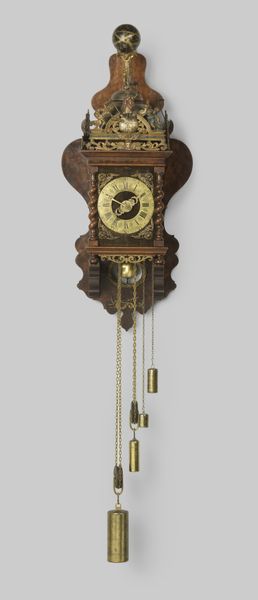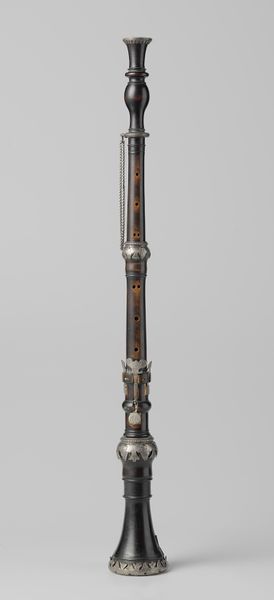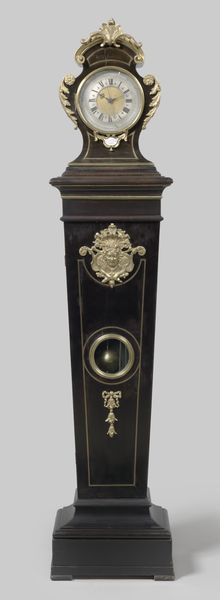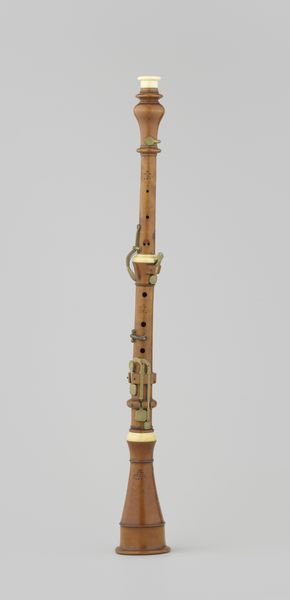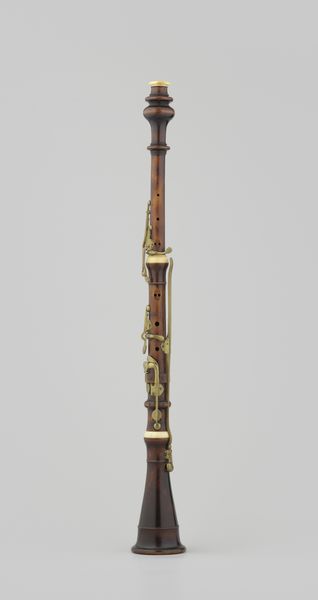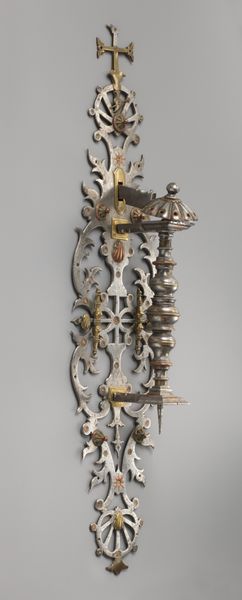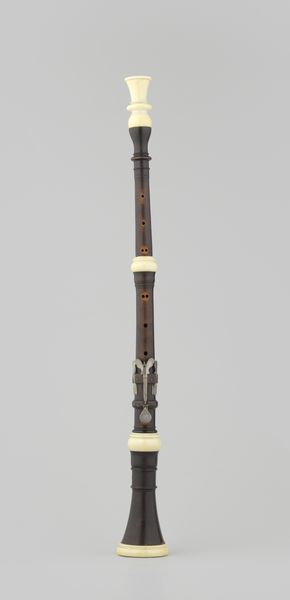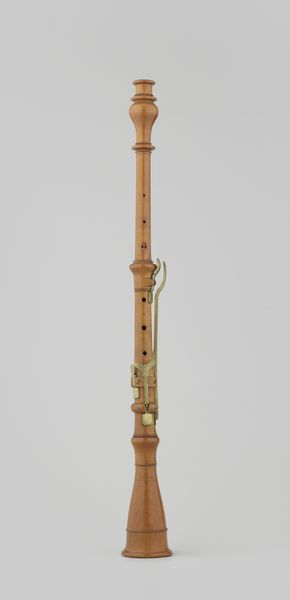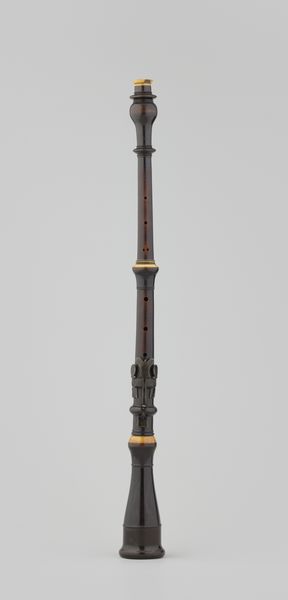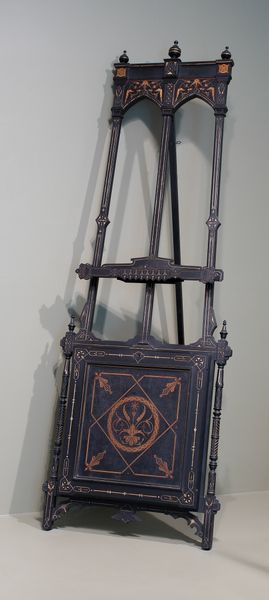
metal, sculpture, wood
#
baroque
#
metal
#
sculpture
#
sculpture
#
wood
#
decorative-art
Dimensions: height 17 cm, width 8 cm
Copyright: Rijks Museum: Open Domain
Editor: Here we have a baroque clock weight crafted around 1700 by D. Engel, a clockmaker. It's primarily composed of metal and wood, giving it a tangible historical presence. Its function within the wall clock is so clearly about tracking time. What do you make of this clock in the context of 18th-century Dutch society? Curator: Clocks like these were far more than just time-telling devices. They were status symbols. To afford something like this suggested a level of comfort and, importantly, of social importance tied to the regimentation of time that Baroque society increasingly demanded. Think about how mercantile activities depended on schedules. Who do you think these objects served? Editor: Well, based on the ornamentation, not your average Joe. Certainly the upper merchant classes or perhaps local government figures? The detail seems incredibly expensive. Curator: Precisely. The intricate sculptural work wasn’t just decorative, it spoke volumes about the owner's standing. Consider the "Koperen gewicht." Even the *weight* is treated as sculpture! The level of finish on something easily concealed speaks of conspicuous production of luxury. Do you find any resonance in that? Editor: It's interesting you highlight how this clock embodies the relationship between artistry, societal status, and the changing perception of time during the Baroque era. This simple wall ornament becomes so much more! Curator: Exactly. So next time, don’t just see an antique, consider the web of social, economic, and political narratives it represents. It's a lens through which we can observe societal priorities and aspirations.
Comments
No comments
Be the first to comment and join the conversation on the ultimate creative platform.


